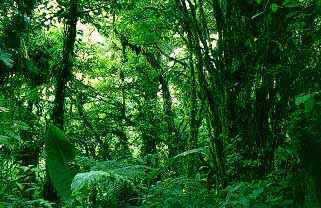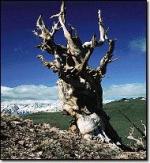http://www.paonline.com/mrmiller/
http://www.berghuis.co.nz/abiator/weird/venusft.jpg
http://www.paonline.com/mrmiller/venus.jpg
There are a vast number of species in the
Plantae kingdom. There are approximately a half million species which
have been described, and because so many new species are found each year,
especially in the tropics, it is likely that another half million still
await discovery. For instance, in Columbia’s Choco Region, half the
plant species remain unregistered, and a large portion still lack a scientific
name. There are many locations like Columbia’s Choco Region, where
tremendous amounts of plant diversity and numerous new species wait.
Carnivorous Plants
http://www.paonline.com/mrmiller/
http://www.berghuis.co.nz/abiator/weird/venusft.jpg
http://www.paonline.com/mrmiller/venus.jpg
The Sarracenia flava on the left is an example
of a carnivorous plant. It has a vase shaped “pitcher” that contains
pollen glands that attract insects. When these insects crawl inside
they become trapped because the sides are slippery and they can’t crawl
back up and out. The plant also has glands that have digestive enzymes
that when released digest the captured insects. The Venus Fly Trap
on the right is one of the most well known carnivorous plants.
Flowering Plants
http://www.lancasterfoods.com/images/flowers.jpg
http://www.bermuda-online.org/flowers.jpg
http://www.worldwildlife.org/windows/images/cactus.jpg
The plant diversity of the world consists primarily of flowering plants. Flowers are all around us and are some of the most recognizable plants in the world. Flowering plants are divided into 2 different groups - monocots and dicots. Monocots produce one leaf when they are growing. Examples of monocots are cattails, grasses, lillies, irises, and orchids. The dicots grow 2 leaves as they age. Examples of dicots include peas, carrots, blueberries, roses, and sunflowers.
Trees

http://www.amgmedia.com/freephotos/fall96/trees.jpg
http://www.ascendingenterprises.com/images/rainforest.jpg
Trees are responsible for a large amount
the oxygen that we breathe. Trees convert the carbon dioxide humans
breathe out back into the oxygen that we inhale. Trees are also homes
to many other animals and plants.
|
|
The giant sequoia trees are the largest trees in the world. The biggest (by volume) of the giant sequoias is in the picture above and is known as General Sherman. It is calculated to be 52,500 cubic feet in volume, and it has a circumference at its base of 102.6 feet!!!!! |
 |
The Bristlecone pine can live longer than any plant in the world. The oldest known living tree is named "Methuselah" and is 4,844 years old!!!! It belongs to the group of trees known as the conifers. |